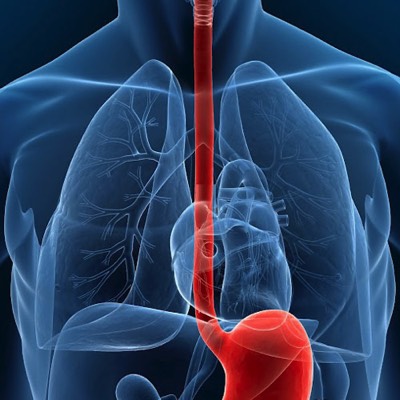PREPARATION FOR THE OESOPHAGEAL MANOMETRY TEST
- Do not eat or drink after midnight the night before the test, until your test is over.
- Medications that need to be taken regularly, such as high blood pressure and heart medication, can be taken with small sips of water when you awaken in the morning.
- If you have diabetes, skipping breakfast may affect your need for diabetic medication. Generally one-half of your usual dose of diabetic medication is taken in the morning of the test. This should be reviewed with your physician or health care provider.
- Medications that are not essential should not be taken on the day of the test until after the test is completed. These medications include:
- Pain medicines such as Endone
- Sedatives or tranquilizers, such as Valium (diazepam), Ativan (lorazepam)
- Antispasmodics, such as Buscopan (hyoscine)
- Promotility agents such as Maxolon (metoclopramide), erythromycin, Motilium (domperidone)
- Pain medicines such as Endone
- If you have questions about a specific medication, ask our office

What is oesophageal manometry?
Oesophageal manometry is a procedure that measures the strength and function of the muscles in your oesophagus (the “food pipe”) that work to push food and liquids from the mouth down to the stomach.
How is oesophageal manometry performed?
Oesophageal manometry takes about 45 minutes. The surgeon will verify that you have not eaten anything within 6 hours of the study. At the start of the test, you will be sitting upright. One nostril is anaesthetised with a numbing spray. A thin flexible plastic is passed through the aneasthetised nostril, down the back of the throat, and into the oesophagus as you swallow. With further swallowing, the tube is passed down into the stomach. There may be some gagging during some of the passage, but it is easily controlled by following instructions. Occasionally, the tube is passed through the mouth and not the nose.
With the tube inside the oesophagus, you will lie down on your back. After a short rest to allow the pressures to equilibrate, the test will begin. The pressures generated by the oesophageal muscle will be measured when the muscle is at rest and during swallows. During the test, the technician usually asks the patient to swallow on command with some water (called a wet swallow). Multiple swallows are tested to allow measurement of the lower oesophageal sphincter (the barrier to reflux), the oesophagus (the swallowing tube), and the upper oesophageal sphincter (in the throat). Pressure recordings are made throughout the study and the tube is then withdrawn.
Patients can usually resume regular activity, eating, and medicines immediately after the test.
What are the side effects of oesophageal manometry?
Although oesophageal manometry may be slightly uncomfortable, the procedure is not really painful because the nostril through which the tube is inserted is anaesthetised. Once the tube is in place, patients talk and breathe normally. The side effects of oesophageal manometry are minor and include mild sore throat, nosebleed, and, uncommonly, sinus problems due to irritation and blockage of the ducts leading from the sinuses and into the nose. Occasionally, during insertion, the tube may enter the larynx (voice box) and cause choking. When this happens, the problem usually is recognised immediately, and the tube is rapidly removed. Care must be used in passing the tube in patients who are unable to easily swallow on command because without a swallow to relax the upper oesophageal sphincter the tube often doesn’t enter the oesophagus but instead enters the larynx.
When is oesophageal manometry used?
Oesophageal manometry is used primarily in several situations. The first is to evaluate the cause of reflux of stomach acid and contents back into the oesophagus (gastro-oesophageal reflux disease or GORD). Symptoms of GORD include heartburn and regurgitation. The second is to determine the cause of problems with swallowing food, such as food or liquids getting stuck in the chest after swallowing. The third is to evaluate patients with chest pain that may be coming from the oesophagus rather than the heart. Finally, the test may be needed to correctly place an acid sensing probe (pH probe) in the oesophagus. For more information on oesophageal pH monitoring, please click the link.
How is oesophageal manometry used?
Oesophageal manometry can diagnose several oesophageal conditions that result in food sticking after it is swallowed. For example, achalasia is a condition in which the muscle of the lower oesophageal sphincter does not relax with each swallow to allow the swallowed food into the stomach. As a result, food is trapped within the oesophagus. Abnormal function of the muscle of the body of the oesophagus also may result in food sticking. For instance, there may be failure to develop the wave of muscular contraction to help propel the food down the oesophagus (as can occur in patients with scleroderma). The abnormal functioning of the oesophageal muscle also may cause episodes of severe chest pain that can mimic heart pain (angina). Such pain may occur if the oesophageal muscle goes into spasm (oesophageal spasm) or contracts too strongly. In either case, oesophageal manometry can identify the muscular abnormality.
Oesophageal manometry is also used to evaluate patients who might have gastro-oesophageal reflux disease (GORD). Manometry often can identify weakness in the lower oesophageal sphincter – the muscle that prevents stomach acid and contents from refluxing back up into the oesophagus. The procedure will also help localise the lower oesophageal sphincter which would help if oesophageal pH monitoring is performed.
Any surgical or invasive procedure carries risks. The information provided here is for general educational purposes only. Before proceeding, you should discuss your particular situation with the experienced doctors at Melbourne Upper GI Surgical Group.
CONTACT
(03) 8805 1400
(03) 9801 5865
admin@uppergi.net
HEAD CLINIC
Suite 4, Knox Private Hospital
262 Mountain Hwy
Wantirna VIC 3152
